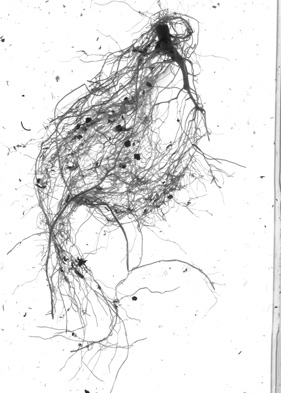
| Gardener’s Supply fixture |
Standard “shop light” |
More info | |
|---|---|---|---|
| Light Intensity | 113 mircromoles | 65.7 micromoles | Our fixtures are 72% brighter |
| Micromoles? Although the lumen is a measurement of light intensity over the visual spectrum, it measures the brightness that humans see. To compare the brightness of grow lights, we use micromoles per square meter per second, a measure of the light plants can use. | |||
| Energy used | 108 watts | 137 watts | Shop light uses 27% more energy |
| Bulb life | More than 7,500 hours | Varies greatly | Typical bulbs can lose effectiveness after just a few thousand hours |
| Light “temperature” | 6,500 kelvin | Varies greatly | It is difficult to get the best light for plants with typical bulbs |
| Weight | 6 lbs. | 12 lbs. | Our fixture is 3″ thinner than a typical shop light |
SURE, you could start your seeds under ordinary fluorescent lights and fixtures. But you can do better. Instead of using a fixture that’s meant to illuminate the garage or workshop, use a fixture that’s designed to make plants grow. Here’s why our bulbs are better:

Roots grown under conventional fluorescent lights.

Roots grown under our high-output lights.
- Our bulbs are more efficient than conventional “shop lights,” which use 27 percent more energy.
- Our high-output, two-bulb fixture is 72 percent brighter than a standard two-bulb unit.
- Seedlings develop strong root systems because our bulbs replicate more of the light spectrum.
- Our fixtures are smaller and lighter; made with less mercury, phosphorous and glass.
- High-efficiency bulbs burn longer. Ours provide more than 7,500 hours, which means five years of seasonal use.
Are the Bulbs “Full-Spectrum”?
Yes. Our bulbs deliver 80 percent of natural sunlight on a color-rendering index; typical bulbs offer only 75 percent or less. What’s more, the “temperature” of the light in our bulbs — 6,500 kelvin — is ideal for growing plants. Typical bulbs are offered in “warm” and “cool” versions; for seedstarting, “cool” bulbs are best. However, it’s difficult to get the right light temperature and brightness in an ordinary bulb.
The Results Are in the Plants
When you grow seedlings with our bulbs, you won’t see the usual signs of light starvation: leggy seedlings leaning inward toward the light. Instead, you’ll see straight, stocky seedlings with well-developed leaves and root systems.
In the garden, these healthier, more robust seedlings will get off to a faster start after transplanting, which means an earlier, more abundant harvest of fruit and flowers.